Composite particles: let’s play Lego! (Particle Physics Series – Episode 2)
About 99.9% of matter is made of quarks, the rest of the mass being electrons and neutrinos. Consequently, quarks can be seen as the elementary Lego bricks of standard matter.
So... Let’s play Lego!
This episode will expose the rules that direct how quarks combine and form composite matter particles, such as our familiar protons and neutrons, and also a real zoo of the weirdest particles!
Feel free to go straight to the video (Particle Physics Episode 2 : Composite particles), or continue reading to put yourself in context.
1 - Elementary particles
In the previous episode , we have discussed elementary particles. These particles are called 'elementary' because these cannot be cut into smaller ones. The elementary particles we know of are:
- 12 matter particles: 6 quarks (up, down, charm, strange, top and bottom), 6 leptons (electron, muon, tau and their respective neutrinos).
- 4 types of exchange particles: The photon (electromagnetic force), the gluon (strong force), W+, W- and Z0 bosons (weak force) and the hypothetical graviton (gravitational force).
- 1 Scalar Boson: The Higgs Boson that interacts with the above particles (or not) and by doing so makes a property emerge: mass.
2 - The standard Model
The theory behind these elementary particles and the interactions that govern them is called the standard model. It is currently the best representation we have of reality at the small scale. Emerges from this model, the different objects and properties we observe and sense at the macroscopic level.
For example, the screen on which you are reading this article, the warm cup of tea you are drinking now, the sound you are hearing from your speakers or the urge you have to scratch an itch on the back of your neck, all emerge from the particles and interactions described by the standard model.
The predictive power of the standard model is just amazingly accurate: many particles were discovered after having been predicted, the last but not least of the model’s achievements being the confirmation of the existence of the Higgs Boson. Yet, when looking at the finer details, there are still some inconsistencies. This is a good thing, as it allows research to continue seeking for answers and it promises some physics beyond the standard model, that will allows us to grasp even deeper intricacies of reality.
3 - Macroscopic properties emerge from small physics
The transition from ultra-small scale physics to macroscopic reality is quite tricky to model. Yes, there are quite a few snags along the way. However, the first step that is to combine elementary particles like quarks into bigger objects, like protons and neutrons, is well predicted by the standard model and confirmed by experience.
The next step is the formation of atomic nuclei (from protons and neutrons) and a step further is to add a bunch of electrons around the newly formed nucleus to create atoms. All respective steps require their own physics (See illustration)!
4 - Combining Quarks forms Hadrons
Quarks are not solitary dudes: they will always combine and form a hadron. A hadron is an object made of quarks glued together by exchange particles of the strong force, the gluons. The gluing effect of the gluons is so strong, that one has to reach tremendous energies, hence temperatures, to observe a quark disconnect from another: 6 trillion degrees Kelvin
There are only 2 places in the Universe where we know for sure that such temperatures exist: during a very energetic collision in powerful particle accelerators like the LHC and in the first instants of our universe. Such a state of matter is called a gluon-quark plama.
We will discuss in a future episode this weird habit that quarks have in hating solitude at temperatures lowers than 6 trillion Kelvins (this phenomena is called ‘quark confinement’).
Depending on how many quarks are used to build a Hadron, different particles can be formed:
- Combining 2 quarks together forms a meson.
- Combining 3 quarks together forms a baryon.
- Combining 4 quarks together may form an exotic hadron called a tetraquark. These have only been reported very recently with high significance. So we know they exist. [Source]
- Combining 5 quarks together might form pentaquarks. However, scientist are not sure yet that these are effectively 5 quarks tied by the strong force, or if this object results of a baryon and a meson bound together like in an atomic nuclei. [Source]
Learn about building hadrons from quarks by viewing this video I prepared for my students:
5 - Let’s build up some Baryons!
5.a - Rules of construction.
Rule 1: baryons are baryons, so the baryon number of a baryon should be +1 (there is 1 baryon per baryon). Every quark has a baryon number of +1/3 (a quark is a third of a baryon), therefore 3 quarks are necessary to build up a baryon.
Rule 2: There is another fundamental rule for building baryons from quarks and it is defined by Quantum ChromoDynamics (QCD) , a theory that models the strong force. QCD states that all quarks have a “strong-force” charge called color (for example blue, green or red). See the side note below to understand the concept of charge.
As in photography, when combining colors one obtains another: for example red and blue blend into magenta. When all three fundamental colors (blue, green and red) add to each other, white is obtained. Well, the condition fixed by QCD for a baryon to exist is that its color must be white (this actually applies to all hadrons). In a proton for example, one of the quarks must be green, the other, red and the third one, blue. Note that here, the color is something unrelated to the flavor of the quark (up, down, strange…).
5.b - Protons and Neutrons.
Since its birth, the Universe has cooled down quite a bit. Because of this, all heavier elementary particles have had the opportunity to decay, and most of them did. This leaves us with only 4 matter particles left onto which to build our reality! The up-quark, the down quark, the electron and the neutrino of the electron.
Consequently, to build the only baryons which are stable today, i.e. the proton and the neutron, we can only use the up quark and the down quark.
Protons are made of 2 up quarks and one down quark. Let’s check if this makes sense:
An up quark has an electric charge of +2/3, the down quark, -1/3. So if I add the charges of 2 up quarks and 1 down quarks, I obtain a total charge of + 2/3 + 2/3 - 1/3 = +1.
Yes! It work, +1 this is the electric charge of the proton.
Let’s check look now at the baryon number. All quarks have a baryon number of +1/3. So if I add the baryon numbers of 2 up quarks and 1 down quark, I obtain a baryon number for the proton of + 1/3 + 1/3 + 1/3 = +1.
Yes! It works also: a proton is a baryon, so it should have a baryon number of +1.

5.c - Other baryons.
Neutron and protons are just two of the myriad of baryons that can be built from quarks. They differ from the others by their stability: neutrons within the confines of a nucleus and protons are very stable, while all other baryons will have half lives less than a nanosecond (and usually much less than that).
There is for example the Lambda made of an up quark, a down quark and a strange quark. This is why it is also labeled (uds). The strange quark can be replaced by a charm quark or even a bottom quark which will impact its overall electric charge.
Many other baryons exists, the Sigma, the Xi, the Omega etc… all coming in various flavors depending on their quark composition. Check this list for a more extensive view.
6 - Let’s build up some Mesons!
Mesons are hadrons built out of two quarks.
6.a - Rules of construction.
Again, we cannot just pick up two quarks and put them together. Some construction rules need to be followed:
Rule 1: Mesons are not baryons so their baryon number must be 0. All quarks have a baryon number of 1/3, so how to manage that? Well, here, we need to introduce the concept of antimatter, that we will discuss in more detail in a further episode.
All elementary fermions in the standard model of particles have antimatter mirror cousins for which quantum numbers such as the electric charge Q and the baryon number B change sign. For example, an up quark (u) with Q = +2/3 and B = +1/3 will have a mirror particle anti-up quark (ū) with Q = -2/3 and B = -1/3. For a meson to keep a Baryon number of 0, it will have to be constructed by combining a matter quark and an antimatter quark.
Rule 2: Mesons are hadrons, so the color rule of QCD applies: mesons must be white. Because they are only formed of two quarks, one of the quarks of a given color (for example, red) must combine with an anti-quark exhibiting the corresponding anti-color (for example, anti-red).
6.b - Pions (Pi mesons)
Pions or pi-mesons are the lightest mesons because they are built solely on up and down quarks. There are three types depending on their electric charge. Their lifetime is relatively short: from a few tens of nanoseconds for the electrically charged pions, down to not more than a few atoseconds for the neutral one!
6.c - Kaons (K mesons)
Kaons (or K-mesons) are mesons which have a strangeness number that is not zero and which contain a light quark (up, anti-up, down or anti-down). This implies that the other quark must be a strange or an anti-strange quark.
Discovered in 1947, these must be some of the composite particles that have allowed us to make the most progress in understanding fundamental interactions. For example, observing kaon-decays in certain conditions put in evidence variation from certain symmetries like the CP violation. This gave scientists strong hints on why matter won the battle over antimatter during the first instants of the universe [Source]. This is a fascinating subject, I hope one day to have the opportunity to write an article about this on Steemit.
6.d - More mesons.
Like for baryons, many different mesons types have been created and observed in particle accelerators. To dig deeper, here’s a good starting point: https://en.wikipedia.org/wiki/List_of_mesons
7 - Conclusion
This article made us realize that despite the fact that only two composite particles form 99,9% of matter (protons and neutron), there is a myriad of them that are allowed to exist!
Quarks combine to form hadrons according to the rules of quantum chromodynamics (hadrons are white). Hadrons can be formed of two quarks (those are mesons, like the pion and the kaon) and three quarks (those are baryons, like the proton and the neutron). 4-quark hadrons exist and maybe even 5-quark ones, but their study is still in its infancy. 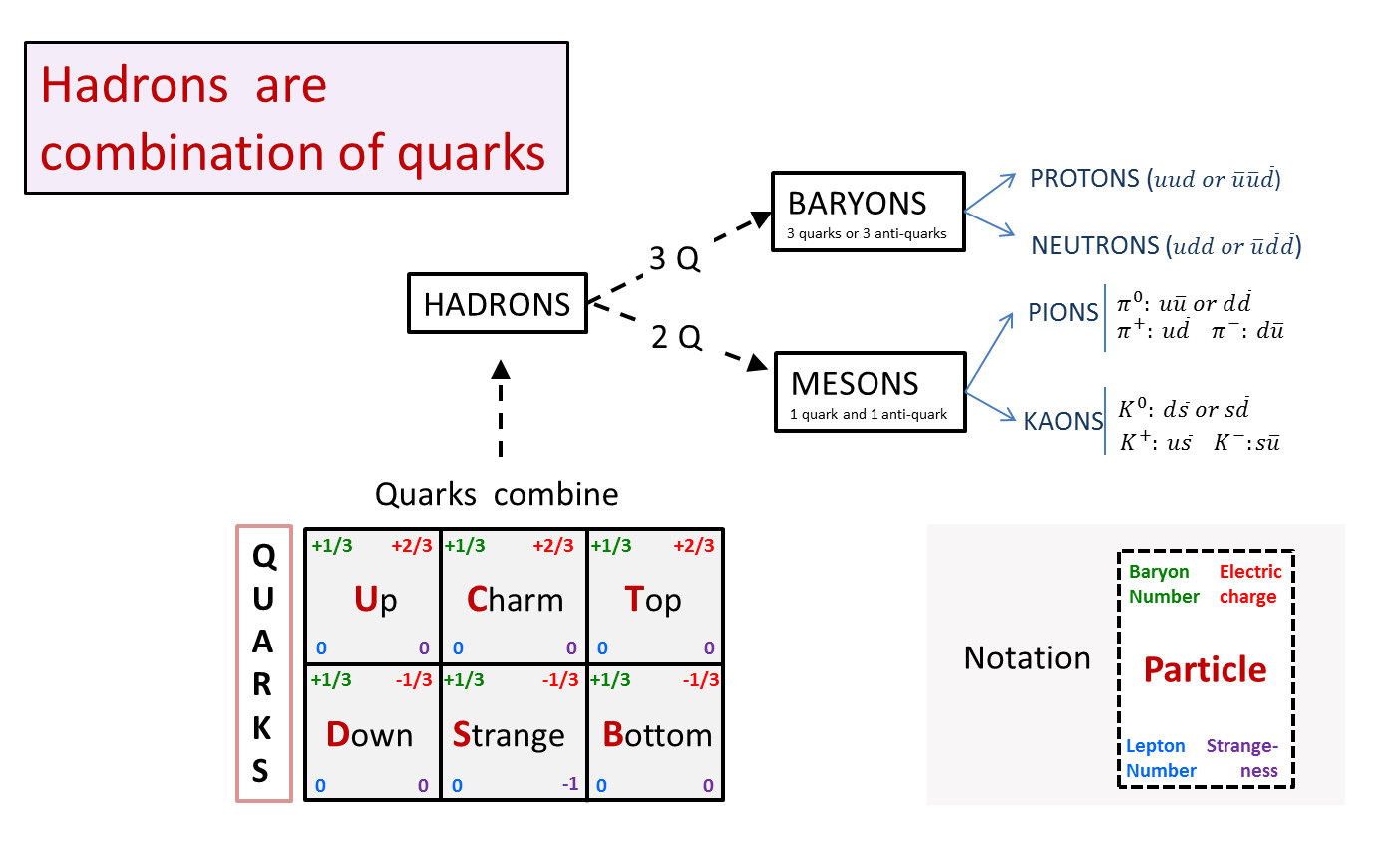
Solution to Quizzes:
Solution Quiz 1:
Neutrons are made of 2 down quarks and 1 up quark. The up quark has an electric charge of +2/3, the down quark, -1/3. So if I add the charges of 1 up quark and 2 down quarks, I obtain a total charge of + 2/3 - 1/3 - 1/3 = 0.
All quarks have a baryon number of +1/3. So if I add the baryon numbers of 1 up quark and 2 down quarks, I obtain a baryon number for the neutron of + 1/3 + 1/3 + 1/3 = +1. It is consistent: a neutron is a baryon, thus has a baryon number of +1.
Solution Quiz 2:
- The (uds) Lamba particle is made of up, down and strange quarks, their respective charges are +2/3, -1/3 and -1/3, so the charge of the (uds) lambda baryon is 0.
- The (udc) Lamba particle is made of up, down and charm quarks, their respective charges are +2/3, -1/3 and +2/3, so the charge of the (udc) lambda baryon is +1.
Solution Quiz 3:
- a/ All Pi mesons are made of a matter quark with B = 1/3 and an antimatter quark with B = -1/3, therefore the total baryon number for Pi Mesons is +1/3 – 1/3 = 0
- b/ Positive pion: 1 up (Q = +2/3) and 1 anti-down (Q = +1/3) so total charge is: +1
Neutral pions: 1 up (Q = +2/3) and 1 anti-up (Q = -2/3) so total charge is: 0
Negative pion: 1 anti-up (Q = -2/3) and 1 down (Q = -1/3) so total charge is: -1
Solution Quiz 4:
The making of this series on particle physics is still on-going. here is the planned table of content:
Episode 1 discussed elementary particles within the context of the standard model.
Episode 2 (this one) looked at composite particles formed from elementary particles.
Episode 3 will take a closer look at the elementary fermions and their properties. This is such a vast topic, that I will most probably sub-divise this section into multiple posts (Quantum numbers, Quark confinement, Neutrinos, anti-fermions etc...)
The following episodes will most probably deal with fundamental forces and their exchange particles (bosons), conservation laws as the backbone of reactions between particles, and finally Feynman diagrams.
Enjoy the voyage!
The 'Particle Physics' video series is aimed at providing an introduction to the world of small scale physics to non-scientists and high school students preparing for their high school exams.
If you wish to deepen your understanding, please explore @lemouth series of articles on particle physics. You can start here: https://steemit.com/science/@lemouth/the-bestiary-of-particle-physics-this-is-how-i-introduced-particle-physics-to-cern-summer-students
Image credit: the decorative picture at the end, some elements of the friezes, and the molecule of adrenaline were images found on Pixabay.com. These were used as visual elements in the illustrations.
The picture representing the three fundamental colors and their combination was found here.
All textual references are included in the text.
All illustrations are created by @muphy.
Video and music on video produced by @muphy.
Hi,
I’m @muphy,
My life revolves around music production, teaching sciences, and discovery through travel.
You enjoyed that post? Resteem and Upvote!
You are interested in these topics? Follow me!
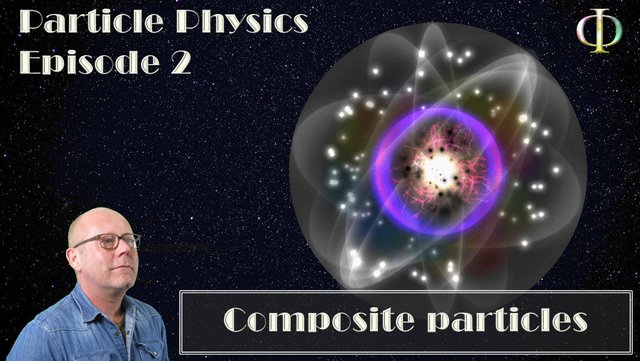
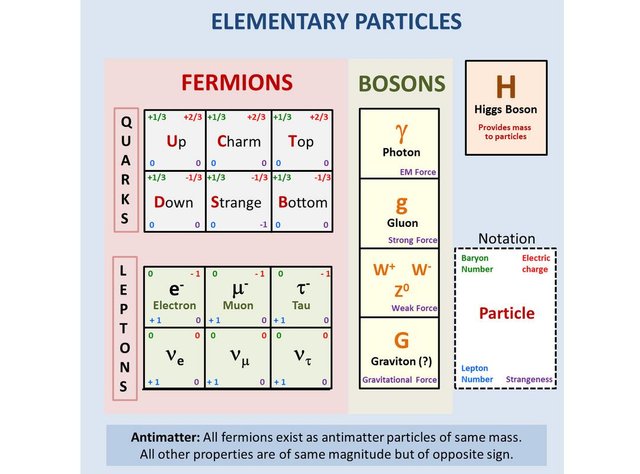

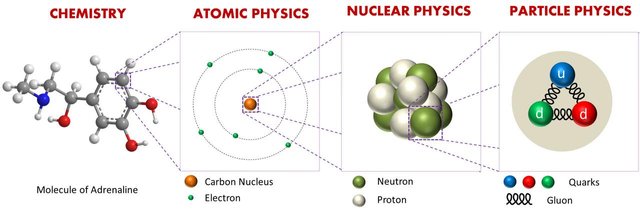

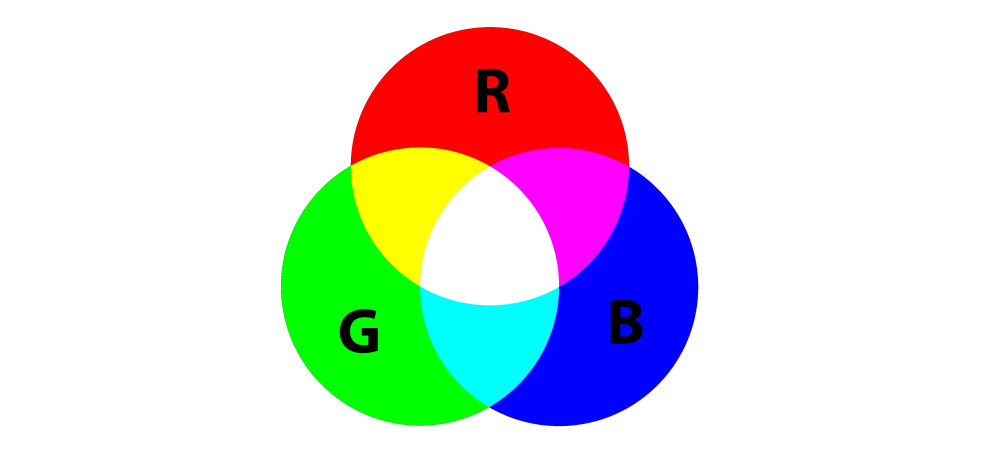

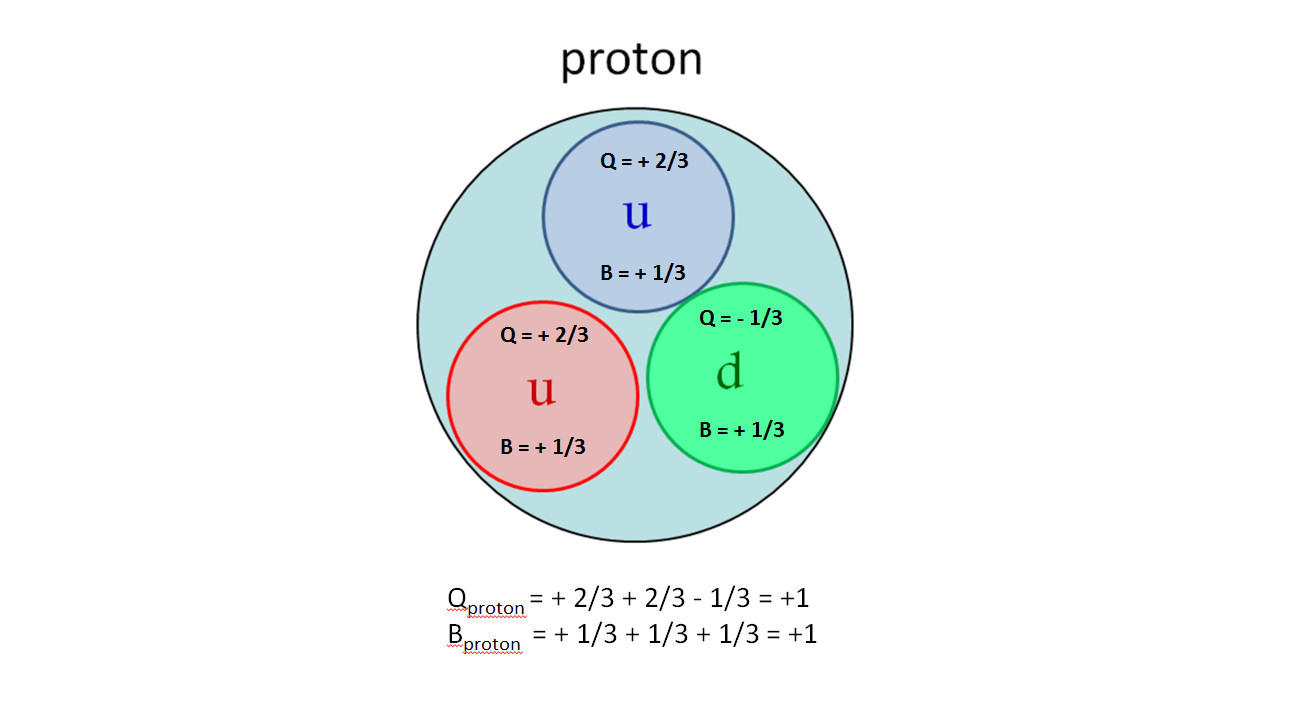




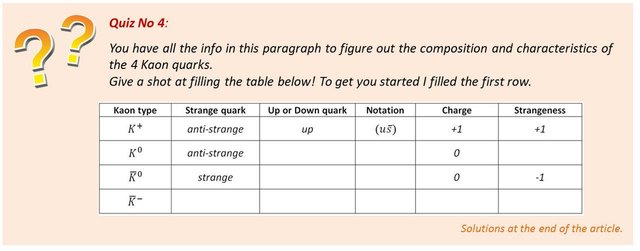


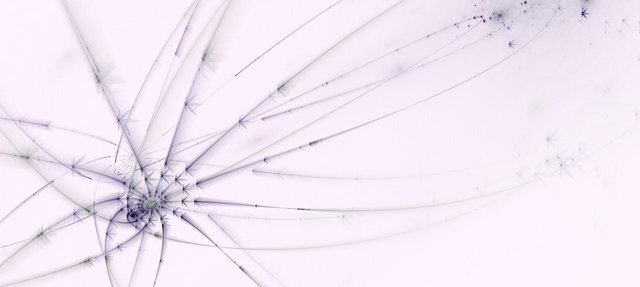
Great article. I hope your students liked it. As usual, some comments from me, but they always come later relatively to the posting date... ;)
The only question being: will we discover it soon, later or much later :)
Actually, pentaquarks have been discovered too, by the LHCb experiment at CERN. See here.
For the list of all known particles (inclusding baryons and mesons), I would refer to the Particle Data Group.
Ah yes, that is a question I discuss with my students when we approach particle physics, It's a great way to show them that science is always a work in progress...
Thank your for the link. I was not writing that the pentaquark has not been discovered yet, but that we still are not sure about its configuration: it is a real pentaquark or a combination of a baryon and a meson? In the link, the same question appears:
"the LHCb researchers conjecture that the pentaquark could be a tightly bound (spherical) system of all five quarks , or a “molecular” system consisting of a weakly bound baryon and a meson " (source:https://physics.aps.org/articles/v8/77)
Wow, I checked it out, this is pretty extensive! Thanks you!
Sorry, I read too fast. Shame on me ;)
This is a great post and one i enjoy seeing on steemit! Im just a little confused on the quantum chromodynamic principle. What do the actual terms of the colors have to do with the charge? Im having a hard time understanding the term ¨white". Im assuming it has something to do with the fact that matter would be ¨visible¨ as opposed to dark-mater?
Thank you for your question, and I truly appreciate you reading the post in depth :-).
You know the electric charge, right? 2 electrons, both with a negative charge will repel each other via the electromagnetic force. But 2 neutrons will not, because they have no electric charge. It is the charge that triggers the application of the electromagnetic force.
There are also 3 other forces known in nature: The gravitational force, the strong force (that binds nucleons and quarks together), and the weak force. Each of these forces have a specific ‘charge’ that is associated with them and that can trigger them.
For example, gravity: two objects will attract each other because of their mass. Bigger the mass, bigger the gravitational force between them, right? Well, here the ‘charge’ of the gravitational force is the mass. The mass triggers the force…
The strong force has also a ‘charge’ called ‘color’. A particle with color charge will trigger the strong force that will act on other particles with color charge. It is a charge much more complex than the electromagnetic charge (the electric charge) and the gravitational charge (mass), as it can come in many variations. Instead of having only 1 level for gravity , or 2 levels like the negative or positive electric charge, the color charge has many more levels. It can be green, blue or red for quarks, cyan (anti-red), yellow (anti-blue) and magenta (anti-green) for antiquarks.
The term “color” for the ‘strong force charge’ was chosen because the rules that define color addition in photography are mimicked by those of the strong charge in QCD. For a Hadron to exist, the sum of the colors of each of the quarks that compose it need to be white. For a Proton or a neutron, the three quarks have to be respectively red, blue and green. When you add in real life red, blue and green, you get white. Same for the mesons, which are also hadrons: they need to be white to exist. For example, a meson can be made a quark with a red color charge, and an antiquark with an anti-red color charge.
It is a weird concept, and can be a little un-intuitive at first, but it once you get it, it is limpid.
I hope this clarifies things for you a little, but if you remain still a little confused about the color charge, or wish to dig deeper, check this link: https://en.wikipedia.org/wiki/Color_charge
Be well and colorful!
The infinitely small, for me, is even more fascinating than the infinitely big.
Those experiments in which matter acts differently when observed and when not observed bend my mind. I just can't understand how this all works, and I think Humanity may be limited by being a tri-dimensional being...
We can understand or try to understand the 4th dimension, but what about the rest? These thoughts are what make me an adept of string theory.
Cheers
You'd be surprised, but for me, more I dive into quantum mechanics, more what I read and learn makes sense to me... Blending all the information and theories together, I am starting to have an opinion on how things are, and grasp that everything we see and experience is just an emergent property of what is going on at the smallest level. On the other hand, uncertainty works also for my opinion, digging even deeper will probably make it evolve.
One of the things I find the most mysterious is how a world of probability becomes a world of quasi certainty when one scales up.
Weirdly, the article I wrote here seems deep, but it is just the surface, and actually an illusion. Particle physics is an illusion in terms that particles do not really exist as presented here. It is just a model used to allow beginners to step their first foot in the incredible world of small scale physics, where fiction hugely surpasses science fiction.
very informative blog i have learned many things from the blog
Thank you, I am glad it brought you something :-)
Muy buena explicación, cuando estudiaba me interese muy poco por la Química pero cada día debemos de aprender cosas nuevas
Mucha gracias. I find Particle Physics easier than chemistry, and also on a personal level more interesting, because more fundamental. I hope you enjoyed reading it even if it is in English...
Si amigo muy interesante
Darth Quark : Ruler of the Galaxy !
Cool post / Peace (-:
There are two rulers...
The up quark and the down quark...
Yin and Yang ;-)
great!!! massive science there! Check out my lego post too!
I checked it out. Impressive building you built for the Chinese New Year. I should try to do the same with Quarks ;-)
yup you should! Thanks for your time checking out my lego build
When i saw again chemistry i felt like i will have headache LOL
This is not chemistry, It is much more fundamental :-), therefore easy to grasp:
Chemistry might give me a headache also because there are so many things to know, but more you look at fundamental stuff, things become simpler... It might look complicated when one is new to it, but I assure you, particle physics is much easier than chemistry!
This is so informative, I have learnt a lot about quarks and how our protons, electrons a neutrons are being formed.. I have never had the knowledge before, weld one @muphy.. Following you right away
Wow i have been searching for something like this
I thought i was the only one
This isvery nice